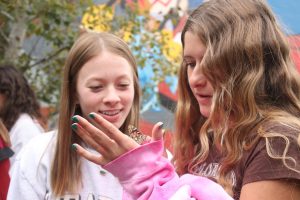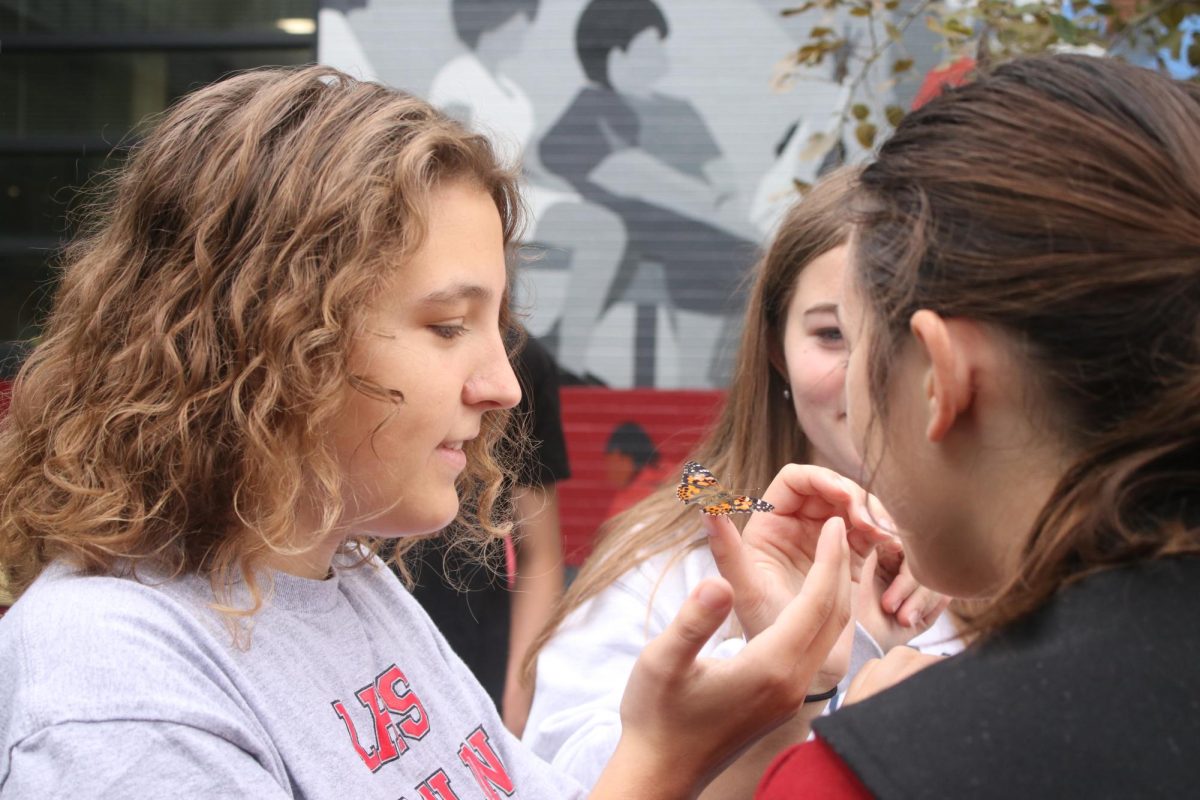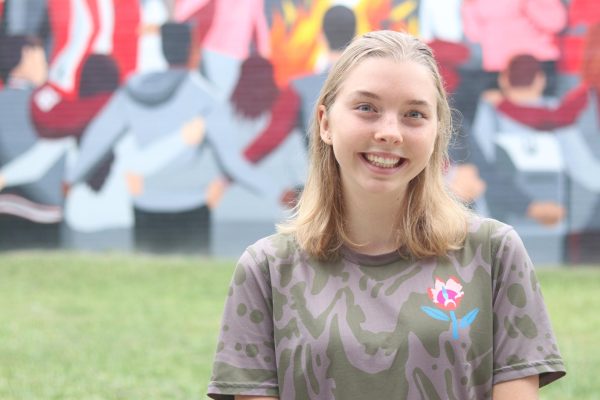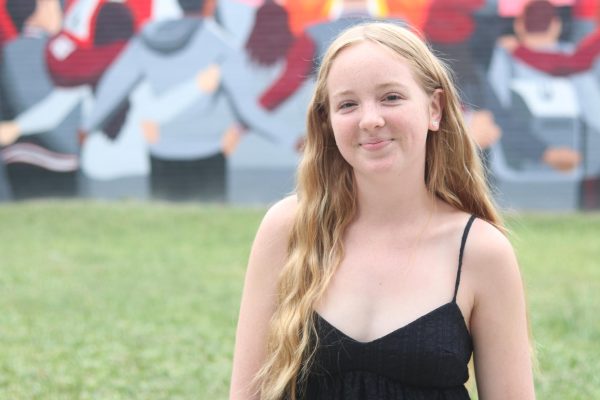A cold front had just arrived, but Lisa Ball’s AP Environmental Science class headed outside anyway. With them, around twenty painted lady butterflies newly emerged from their chrysalises.
For almost a month the students had taken care of the butterflies daily, weighing and measuring them in small cups and, more crucially, removing crass, a fancy name for butterfly poop. It was all part of the class’s focus on primary productivity, or the amount of energy which moves through the food chain. As the students measured, they witnessed the butterfly’s rapid growth.
“We put them in there for a weekend, and we came back and they’d doubled in size,” senior Whitney Gaddie said. “It was crazy.”
For her and many other students, release day was long anticipated and bittersweet.
“We went to let them go, and I felt kind of sad,” Gaddie said.
She wasn’t the only one. Many students had grown attached to their butterflies, naming them and taking pride in their growth.
“I wanted them to be the biggest butterflies, the best,” junior Trent Blettner said.
This emotion adds to the excitement of release day.
“It’s like a party outside in the garden, some of them are so proud, their baby butterflies made it all the way,” Ball said.
The garden Ball mentioned is the new school pollinator garden, which Ball and her environmental club installed just last year. The garden provides an ideal launch area for the butterfly release.

“In the past we would just have to take the painted ladies out and put them in a tree or hope for the best,” Ball said. “[The pollinator garden] has made a perfect spot for them to be launched and provides them with a food source that they can feed off right away.”
This year, as the butterflies prepared for their long journey south, the weather outside was rather unwelcoming. Nevertheless, the class was determined to set them free.
“It was forty degrees, and it was starting to rain,” Blettner said. “But we were excited.”
Blettner himself was worried one of his butterflies had died, but was relieved to discover otherwise.
“When we found out our butterflies had survived, we were pretty hyped, and it was really fun releasing them,” Blettner said.
Though bittersweet, Gaddie agreed the day was joyous.
“Overall, I thought it was happy because we got to release and hold them,” Gaddie said. “It was just really cool.”
Along with the fun the butterflies bring, Ball values providing hands-on opportunities in her classes.
“I am all about experiential learning. It helps them remember and feel connected,” Ball said. “It really does become part of their daily routine to come in and be excited to check on their caterpillars and see what’s happening. They are going to remember that, as opposed to just doing a worksheet.”
Blettner also recognized the work’s value.
“It was definitely interesting, especially to go along with our unit, seeing how energy moves through an ecosystem,” Blettner said. “You see it in the textbook, but actually getting to measure that stuff out was very neat.”





